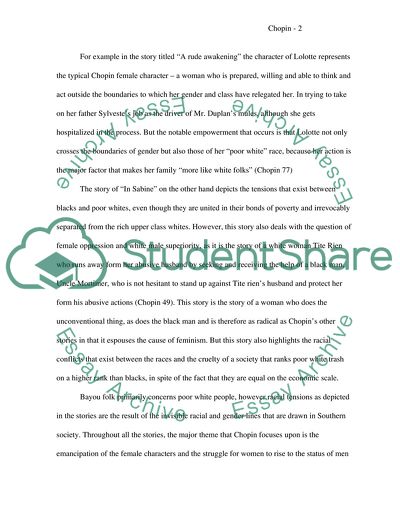Cite this document
(The Works of Kate Chopin Coursework Example | Topics and Well Written Essays - 1500 words, n.d.)
The Works of Kate Chopin Coursework Example | Topics and Well Written Essays - 1500 words. https://studentshare.org/literature/1703742-criticisms-on-kate-chopins-work
The Works of Kate Chopin Coursework Example | Topics and Well Written Essays - 1500 words. https://studentshare.org/literature/1703742-criticisms-on-kate-chopins-work
(The Works of Kate Chopin Coursework Example | Topics and Well Written Essays - 1500 Words)
The Works of Kate Chopin Coursework Example | Topics and Well Written Essays - 1500 Words. https://studentshare.org/literature/1703742-criticisms-on-kate-chopins-work.
The Works of Kate Chopin Coursework Example | Topics and Well Written Essays - 1500 Words. https://studentshare.org/literature/1703742-criticisms-on-kate-chopins-work.
“The Works of Kate Chopin Coursework Example | Topics and Well Written Essays - 1500 Words”. https://studentshare.org/literature/1703742-criticisms-on-kate-chopins-work.


